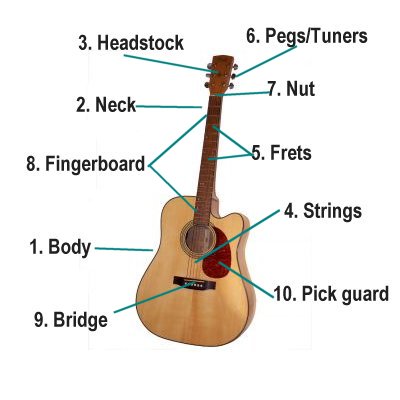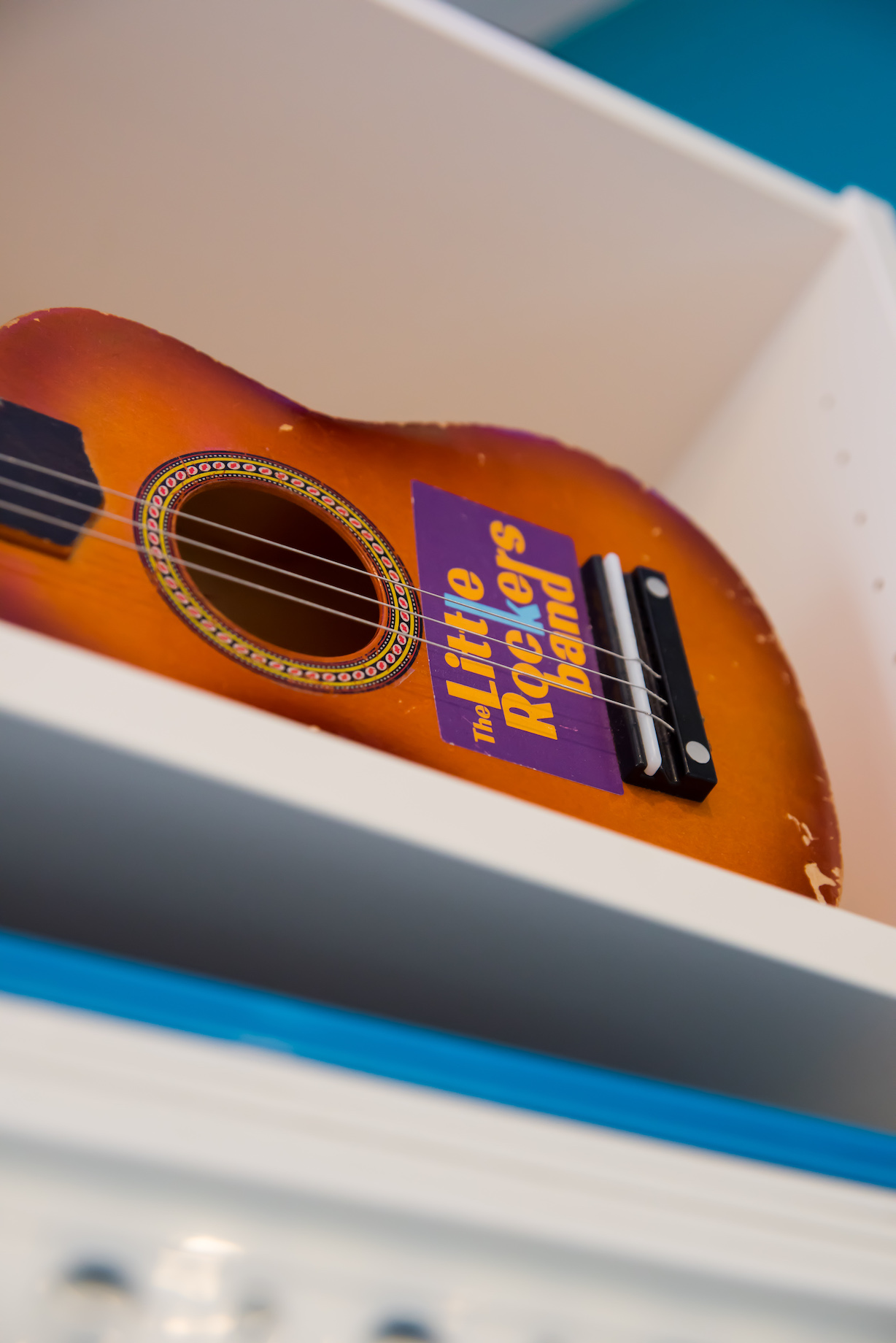

The string pegs hold each string in place at the bottom end of the guitar.

The saddle is a small bit of plastic found on the bridge that elevates each string slightly to give them tension. The bridge is the piece where the saddle and string pegs reside on.

The pickgaurd (also known as a scratchplate) is a bit of plastic that protects the wood of the guitar from being scratched and damaged by the pick. Electric guitars generally do not have sound holes, as the sound is transferred to an amplifier. The sound hole is the hole in the body of the guitar that allows the guitar to resonate with sound. The body of the guitar is the big piece of wood that (again, just as the name implies) looks like a big body. Most guitars have fret markers in identical positions, but you will occasionally find slight variations from one guitar to the next. Therefor, if I was playing the above guitar and needed to move to the 5th fret, rather than counting, I could use the first fret marker as a reference point. For example, on the diagram above, the first fret marker is on the 5th fret. Fret Markers:įret markers are usually small decorations on the fretboard that are used to give the guitarist a visual cue as to which fret is which. The fretboard is the surface of the guitar where you push down on the strings, to execute notes. The fretboard is just the front or face of the neck, where the frets are found. The neck is the entire piece of wood itself, with frets on the front and the curved surface on the back. The neck is the piece of wood that looks (just like the name implies) a long neck. The fretboard and the neck are actually two different things, even though they have been grouped together in this image. Just like the strings, the frets need a bit more attention, so we will discuss them a bit later too. The image above points to three frets, but there are more frets spread along the entire fretboard.

The frets are the little pieces of metal that divide the fretboard into small areas where we can place our fingers. Each string has a name, but we’ll discuss that a bit later. These are the things that we pick, strum and finger to produce sound. Have a look at the image below and then read through the explanations. If you are left handed, simply make the switch in your head when reading. I know of course, that in reality this is not the case, but rather than saying things like ‘use your right hand to strum if you are right-handed or your left to strum if you are left handed’ etc… It’s easier just to use right-handed guitars as the default. I’m basically assuming that everyone is right-handed and plays a right-handed guitar.
WHAT ARE THE PARTS OF THE GUITAR SERIES
If you do, that’s great, this lesson can act as a check-list, to confirm that you are on the right track.īefore we go on, I want to mention the following – for the sake of clarity and consistency, all of the lessons in this series use a right handed-guitar as the default guitar. We are going to go over these fundamentals so that we can move on to playing and making music. You might already know most or all of these things. There are a few basic things that every guitarist should know before even playing one note. Before you start planning overseas trips and bunji-jumping adventures together, you need to get to know each other. There will be times of joy and times of challenge, but with persistence and discipline your friendship will continue to grow and flourish. It’s time to learn a few basic things about your new friend.


 0 kommentar(er)
0 kommentar(er)
